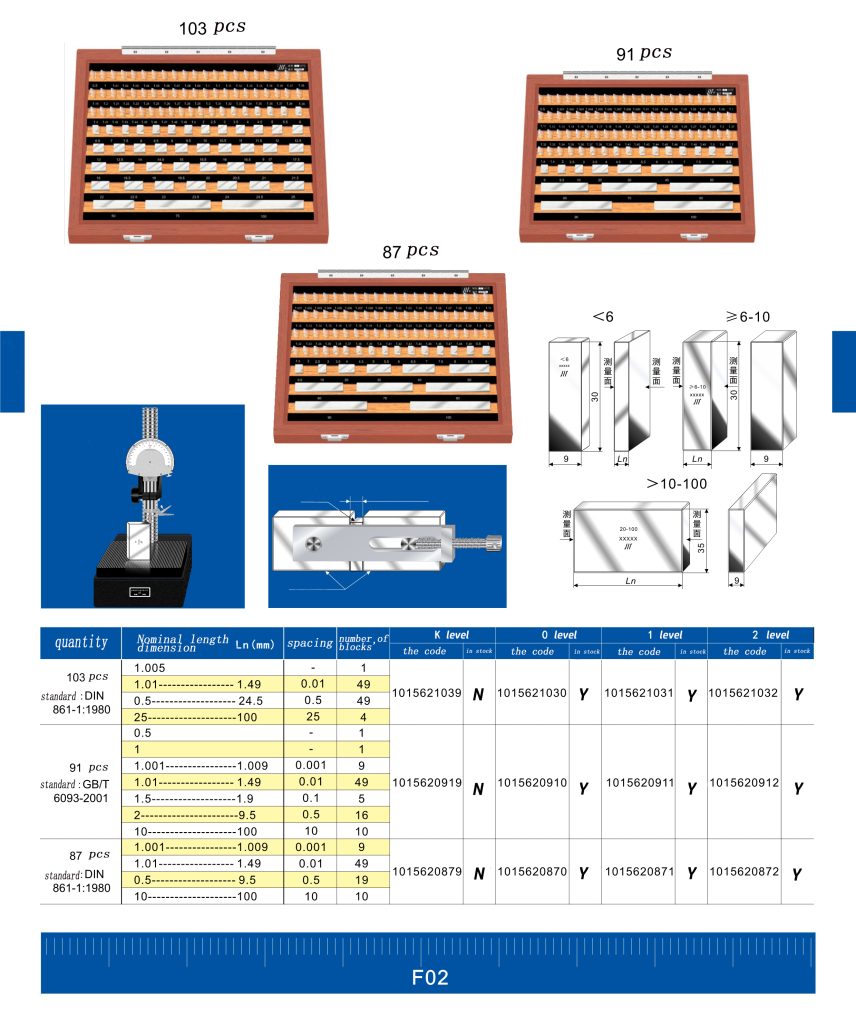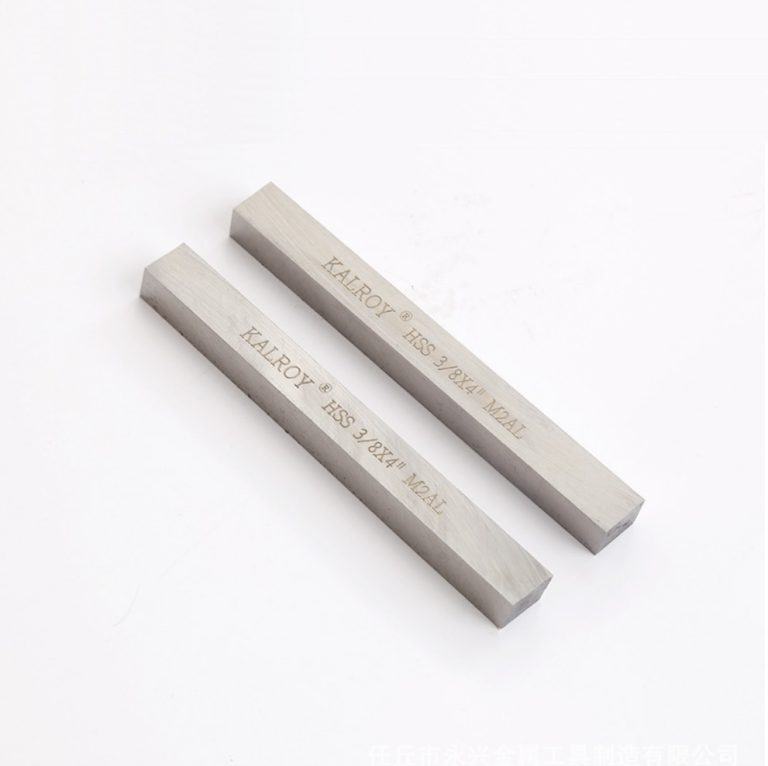Use of gauge blocks and measurement accuracy
Purpose and accuracy of gauge blocks
- Gauge blocks are also called block gauges. It is the most basic measuring tool for dimension control in the machine manufacturing industry, the medium for transferring dimensions from standard length to parts, and the benchmark for length measurement in technical measurement.
The length measuring block is a rectangular block made of bearing steel with good wear resistance, high hardness and not easy to deform. It has two measuring surfaces, upper and lower, and four non-measuring surfaces. The two measuring surfaces are very flat, smooth parallel planes that have been precision ground and polished. The rectangular section size of the gauge block is: the gauge block with a basic size of 0.5~10mm has a cross-sectional size of 30mmX9mm; the basic size is greater than 10 to 1000mm, and its cross-sectional size is 35mmx9mm.
The working size of the gauge block does not refer to the distance anywhere between the two measuring surfaces, because the two measuring surfaces are not absolutely parallel, so the working size of the gauge block refers to the center length, that is, the center of one measuring surface of the gauge block to the other. The vertical distance between the surface and the bonding surface (whose surface quality is consistent with the gauge block). On each gauge block, its working size is marked: when the size of the gauge block is equal to or greater than 6mm, the working size is marked on the non-working surface; when the gauge block is below 6mm, the working size is directly marked on the measuring surface.
The accuracy of the gauge block, according to the accuracy of its working size (that is, the center length) and the accuracy of the plane parallelism of the two measuring surfaces, is divided into five accuracy levels, namely, 00, 0, 1, 2 and ( 3) level. Grade 0 gauge blocks have the highest precision, and the working dimensions and plane parallelism are very accurate, with only a few tenths of a micron error. Generally, only dry provinces and cities are used as measurement units for verification or calibration of precision instruments.
The accuracy of level 1 gauge block is second, and that of level 2 is even lower. Grade 3 gauge blocks have the lowest precision and are generally used as gauge blocks in factories or workshops to verify or calibrate precision measuring tools commonly used in workshops.
Gauge blocks are precise size standards and are not easy to manufacture. In order to make the gauge block with a slightly larger working size deviation still be used as a precise length standard, the working size of the gauge block can be verified more accurately, and the correction value of the gauge block verification can be added when using it. In this way, although it is cumbersome to use, it can still use the gauge block with a slightly larger deviation as a precise standard of size.
Two sets of gauge blocks and combinations of gauge block sizes
Gauge blocks are supplied in sets and in a box per set. There are gauge blocks of various sizes in each box, and there are certain regulations for their size grouping.
The number of commonly used sets of gauge blocks and the size of each gauge block are shown in Table 4-1.
In the two sets of measuring blocks with a total of 83 and 38 blocks, there are sometimes four protective blocks, so each box becomes 87 and 42 blocks. The protective block is the protective gauge block, which is mainly used to reduce the wear of the common gauge block. It can be placed at both ends of the gauge block group to protect other gauge blocks when in use.
Each gauge block has only one working size. However, since the two measuring surfaces of the gauge block are made very accurate and smooth, they have the characteristics of bonding. That is to say, after the measuring surfaces of the two gauge blocks are gently pushed together, the two gauge blocks can be bonded together and will not separate by themselves, just like a gauge block. Due to the bondability of the gauge blocks, the disadvantage of only one working size per gauge block is overcome. By utilizing the adhesiveness of the gauge block, various gauge block groups of different sizes can be formed, which greatly expands the application of the gauge block. But in order to reduce the error, it is hoped that the number of blocks forming the gauge block group shall not exceed 4~5 blocks.
In order to make the number of blocks in the gauge block group the minimum value, it is necessary to select the size of the block gauge according to certain principles when combining, that is, first select the gauge block with the size that can remove the minimum number of digits. For example, if a gauge block group of 87.545mm is to be formed, the selection method of the gauge block size is as follows:
Dimensions of gauge block set 87.545mm
The size of the first gauge block selected is 1.005mm
Remaining size 86.54mm
The size of the second gauge block selected is 1.04mm
Remaining size 85.5mm
The size of the third gauge block selected is 5.5mm
The rest is the fourth size 80mm
The gauge block is a very precise measuring tool, and the following points must be paid attention to when using it:
1 Before use, wash off the anti-rust oil in gasoline, and then wipe it with clean buckskin or soft silk. Do not use cotton yarn to wipe the working surface of the gauge block, so as not to damage the measuring surface of the gauge block.
- Do not take the measuring block directly by hand after cleaning, but use soft silk lining to take it. If you must hold the gauge block by hand, you should wash your hands and hold it on the non-working surface of the gauge block.
3 When placing the gauge block on the worktable, the non-working surface of the gauge block should be in contact with the table surface. Do not place the gauge block on the blueprint, as there are residual chemicals on the blueprint surface that will rust the gauge block.
4 Do not make the working surface of the gauge block and the non-working surface push together, so as not to scratch the measuring surface.
5 After the gauge block is used, it should be cleaned in gasoline in time, wiped with soft silk, coated with anti-rust oil, and placed in a special box. If you need to use it frequently, you can store it in a dry cylinder without applying anti-rust oil after washing. It is absolutely not allowed to bond the gauge blocks together for a long time, so as to avoid unnecessary damage due to metal bonding.









